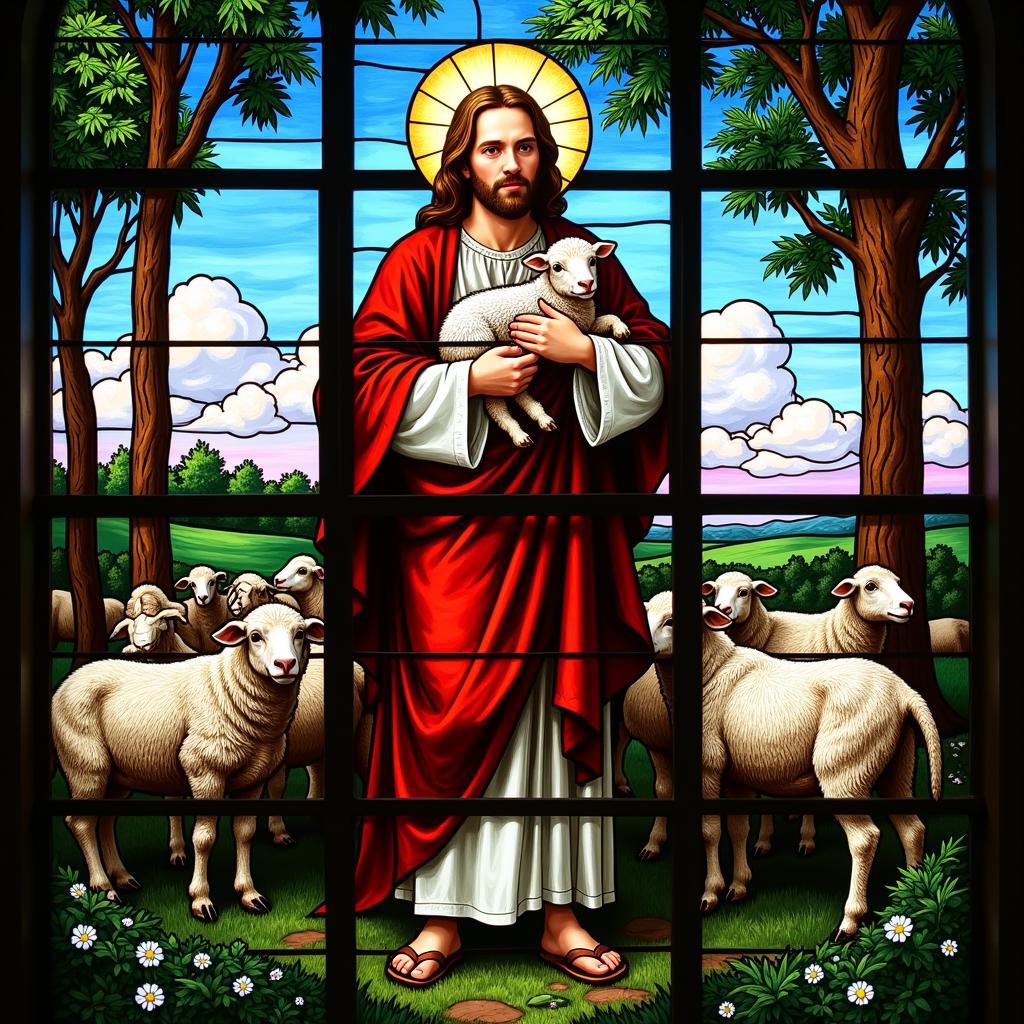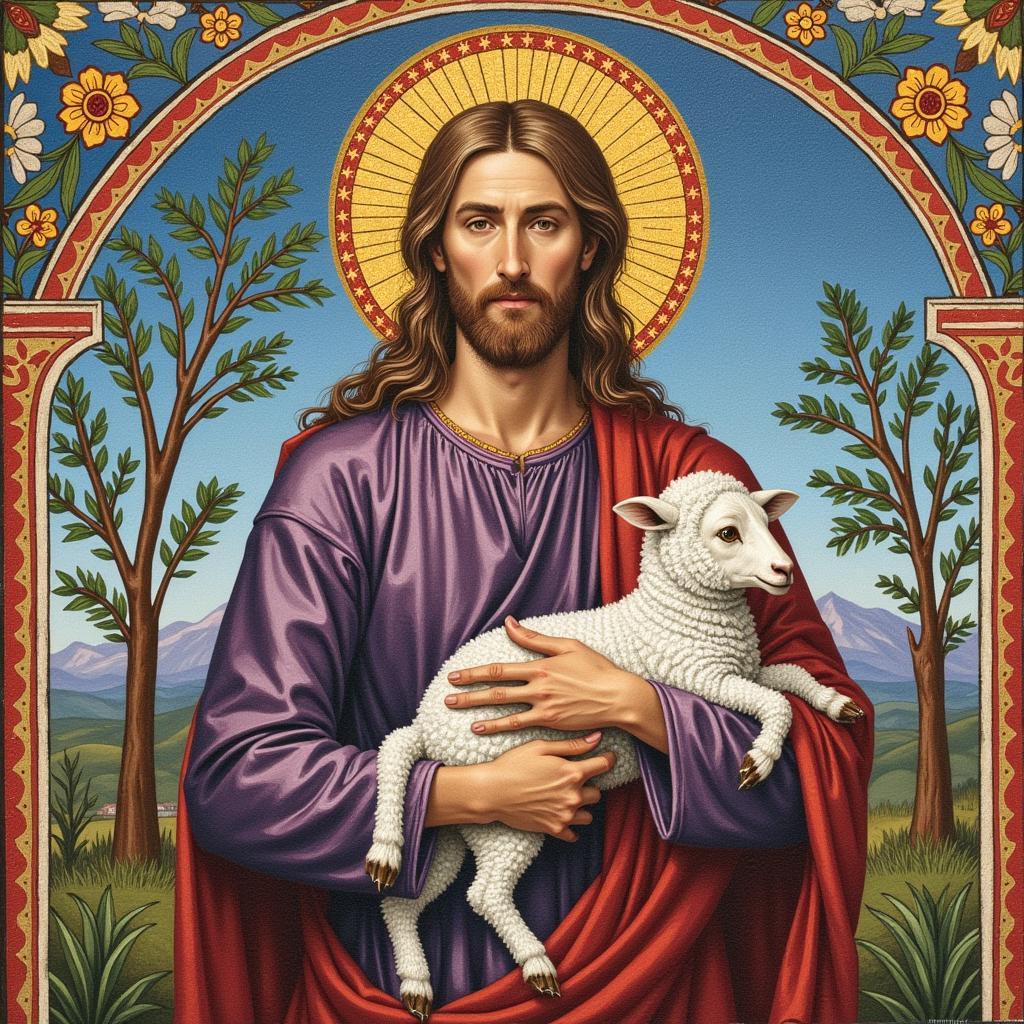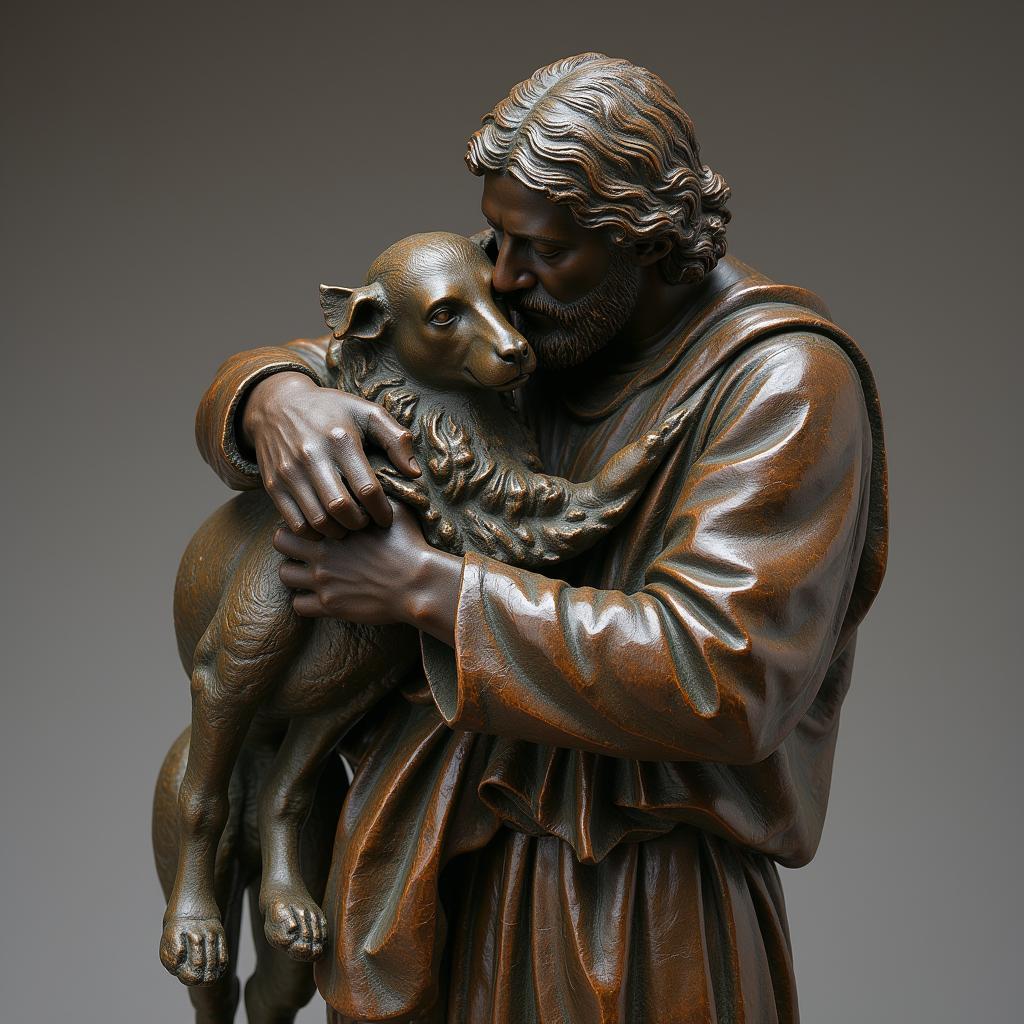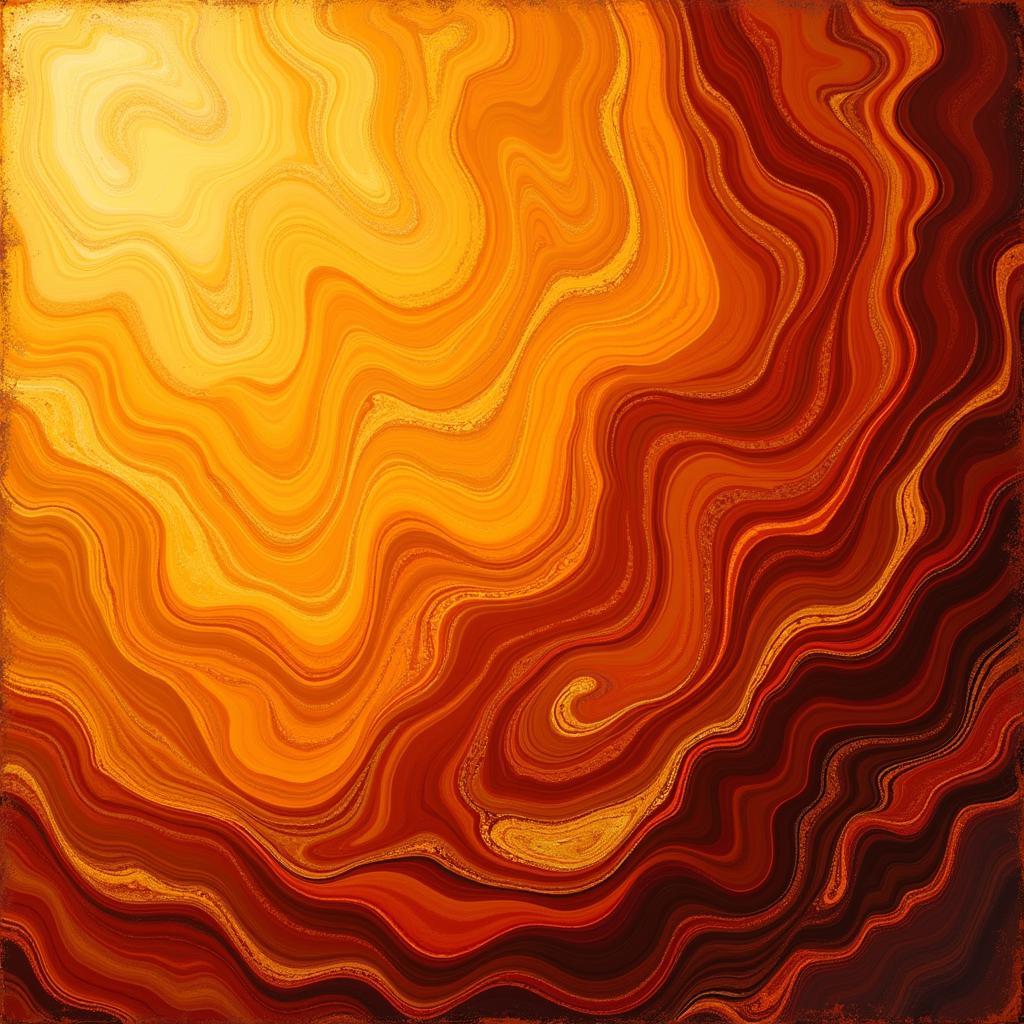Jesus the Good Shepherd Art: A Divine Expression of Love and Protection
Jesus The Good Shepherd Art has captivated believers for centuries, offering a powerful visual representation of Christ’s unwavering love and devotion to his flock. This iconic imagery, rooted in biblical scripture, resonates deeply with Christians across denominations and cultures, serving as a constant reminder of divine guidance and protection. The Good Shepherd theme has inspired countless artists, resulting in a diverse range of artistic expressions, from ancient mosaics to contemporary paintings. Exploring this rich artistic tradition unveils not only the evolving aesthetic styles but also the enduring spiritual significance of this beloved biblical narrative. After the introduction, we’ll dive into the fascinating world of painting jesus art.
The Symbolism of Jesus the Good Shepherd in Art
The image of Jesus as the Good Shepherd is laden with symbolic meaning. The shepherd’s crook, often depicted in these artworks, represents divine guidance and authority, leading the flock towards salvation. The lost sheep, cradled in Jesus’ arms, symbolizes the redemptive power of God’s love, reaching out to those who have strayed from the path of righteousness. The depiction of sheep peacefully grazing in lush pastures evokes a sense of tranquility and spiritual nourishment, portraying the blessings that come with following Christ.
What does the staff represent in Good Shepherd art? It symbolizes divine guidance and authority.
 Stained Glass Depiction of Jesus the Good Shepherd
Stained Glass Depiction of Jesus the Good Shepherd
The Good Shepherd imagery also speaks to the personal relationship between Jesus and each individual believer. It underscores the idea that Christ knows each member of his flock intimately and cares deeply for their well-being. This intimate connection resonates deeply with viewers, fostering a sense of comfort and belonging within the Christian community. This theme of personal connection is central to much of the art of christ found throughout history.
The Evolution of Jesus the Good Shepherd Art Through the Ages
From early Christian catacomb paintings to Renaissance masterpieces, the depiction of Jesus as the Good Shepherd has evolved through various artistic styles and interpretations. Early representations often portrayed a youthful, beardless shepherd in simple tunics, reflecting the Greco-Roman artistic conventions of the time. Later, during the Byzantine era, the imagery became more regal, with Christ depicted in elaborate robes and a crown, emphasizing his divine kingship.
How did depictions of Jesus the Good Shepherd change over time? Early depictions showed a youthful shepherd, while later portrayals emphasized his divine kingship.
 Ancient Mosaic of Jesus the Good Shepherd
Ancient Mosaic of Jesus the Good Shepherd
The Renaissance period saw a renewed interest in naturalism and classical ideals, resulting in more lifelike and emotionally expressive portrayals of the Good Shepherd. Artists like Raphael and Murillo captured the tenderness and compassion of Christ in their paintings, emphasizing the human aspect of his divine nature. The exploration of Jesus’s humanity is a key theme in much of the art of jesus from this era.
Jesus the Good Shepherd Art in Modern Times
Even in contemporary art, the theme of Jesus as the Good Shepherd continues to inspire artists. Modern interpretations often explore new mediums and perspectives, reflecting the evolving cultural landscape. Some artists use abstract forms and bold colors to convey the timeless message of divine love and protection, while others incorporate elements of social commentary to address contemporary issues through the lens of this ancient narrative. You can find more inspiring portrayals of Christ in lds art christ.
“The Good Shepherd imagery transcends time and culture, offering a universal message of hope and redemption,” says Dr. Eleanor Vance, art historian specializing in religious iconography. “It’s a testament to the enduring power of this biblical narrative to inspire artists and connect with viewers on a deeply emotional level.”
What is the enduring appeal of Good Shepherd imagery? It offers a universal message of hope and redemption.
 Modern Sculpture of Jesus the Good Shepherd
Modern Sculpture of Jesus the Good Shepherd
Another expert, Reverend Thomas Carter, a theologian and art enthusiast, adds, “The image of Jesus the Good Shepherd reminds us that we are never truly alone. Even in times of hardship and uncertainty, we can find solace in the knowledge that Christ is always watching over us, guiding us towards a brighter future.”
Conclusion
Jesus the Good Shepherd art provides a powerful visual testament to Christ’s unwavering love, guidance, and protection. From ancient mosaics to modern sculptures, this enduring theme continues to resonate with believers, offering a source of comfort, inspiration, and hope. Exploring these diverse artistic expressions deepens our understanding of this beloved biblical narrative and its profound spiritual significance.
FAQ
- What is the biblical basis for the Good Shepherd imagery? The primary source is John 10:1-18, where Jesus declares himself the Good Shepherd who lays down his life for his sheep.
- What are some common symbols associated with the Good Shepherd? The shepherd’s crook, lost sheep, and peaceful pastures are frequently depicted.
- How has the Good Shepherd been portrayed in different artistic periods? From simple depictions in early Christian art to regal portrayals in Byzantine art and naturalistic representations during the Renaissance, the imagery has evolved significantly.
- Why is the Good Shepherd a popular subject in Christian art? It visually communicates Christ’s love, protection, and guidance.
- Where can I see examples of Jesus the Good Shepherd art? Churches, museums, and art books often feature these images.
Common Scenarios and Questions
-
Scenario: A person is looking for a meaningful gift for a religious friend.
- Question: What type of Good Shepherd art would make a thoughtful gift?
-
Scenario: A teacher is preparing a lesson on biblical parables.
- Question: How can Good Shepherd art be used to illustrate the parable?
-
Scenario: An art enthusiast is interested in exploring religious iconography.
- Question: What are some key artistic interpretations of the Good Shepherd?
Further Exploration
For more insights into religious art, explore other articles on our website, such as “The Significance of Religious Symbolism in Art” and “Understanding Biblical Art.”
Contact Us
For assistance, please contact us at Phone: 02462573573, Email: [email protected], or visit our address: Savico Megamall, 7-9 Đ. Nguyễn Văn Linh, Gia Thụy, Long Biên, Hà Nội 10000, Việt Nam. We have a 24/7 customer service team.


